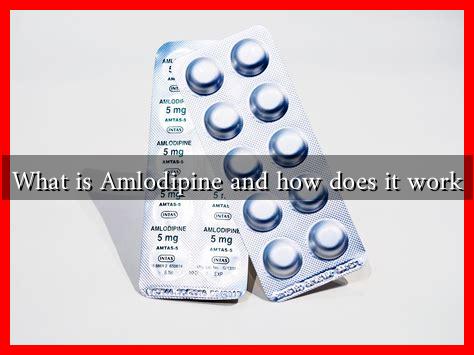-
Table of Contents
What is Amlodipine and How Does It Work?
Amlodipine is a widely prescribed medication primarily used to treat high blood pressure (hypertension) and certain types of angina (chest pain). As a member of the calcium channel blocker class of drugs, amlodipine plays a crucial role in managing cardiovascular health. This article delves into the mechanisms of action, benefits, side effects, and important considerations regarding amlodipine.
Understanding Amlodipine
Amlodipine was first approved for medical use in the United States in 1997 and has since become a staple in the treatment of hypertension and angina. It is available under various brand names, including Norvasc, and is often prescribed as a standalone treatment or in combination with other antihypertensive agents.
How Amlodipine Works
Amlodipine functions by inhibiting the influx of calcium ions into vascular smooth muscle and cardiac muscle cells. This action leads to several physiological effects:
- Vasodilation: Amlodipine relaxes the blood vessels, allowing them to widen. This reduces the resistance the heart has to work against, thereby lowering blood pressure.
- Reduced Heart Workload: By decreasing vascular resistance, amlodipine reduces the workload on the heart, which can be particularly beneficial for patients with angina.
- Improved Blood Flow: The dilation of blood vessels enhances blood flow to the heart muscle, alleviating symptoms of angina and improving overall heart function.
Benefits of Amlodipine
The use of amlodipine offers several advantages for patients dealing with hypertension and angina:
- Effective Blood Pressure Control: Clinical studies have shown that amlodipine effectively lowers systolic and diastolic blood pressure, contributing to a reduced risk of cardiovascular events.
- Long Duration of Action: Amlodipine has a long half-life, allowing for once-daily dosing, which improves patient compliance.
- Minimal Side Effects: Compared to other antihypertensive medications, amlodipine is generally well-tolerated, with fewer side effects reported.
Potential Side Effects
While amlodipine is effective for many patients, it is not without potential side effects. Common side effects include:
- Swelling of the ankles or feet (peripheral edema)
- Flushing or warmth in the face
- Dizziness or lightheadedness
- Fatigue
In rare cases, more serious side effects may occur, such as an allergic reaction or severe hypotension. Patients should consult their healthcare provider if they experience any unusual symptoms.
Case Studies and Statistics
Research supports the efficacy of amlodipine in managing hypertension. A study published in the Journal of Hypertension found that patients treated with amlodipine experienced a significant reduction in blood pressure compared to those receiving a placebo. Additionally, a meta-analysis indicated that amlodipine reduced the risk of cardiovascular events by approximately 20% in hypertensive patients.
Conclusion
Amlodipine is a vital medication in the management of hypertension and angina, offering numerous benefits such as effective blood pressure control, long-lasting effects, and a favorable side effect profile. Understanding how amlodipine works can empower patients to engage in their treatment plans actively. As with any medication, it is essential to discuss potential side effects and interactions with a healthcare provider to ensure safe and effective use.
In summary, amlodipine stands out as a reliable option for those seeking to manage their cardiovascular health, making it a cornerstone in the treatment of hypertension and angina.

